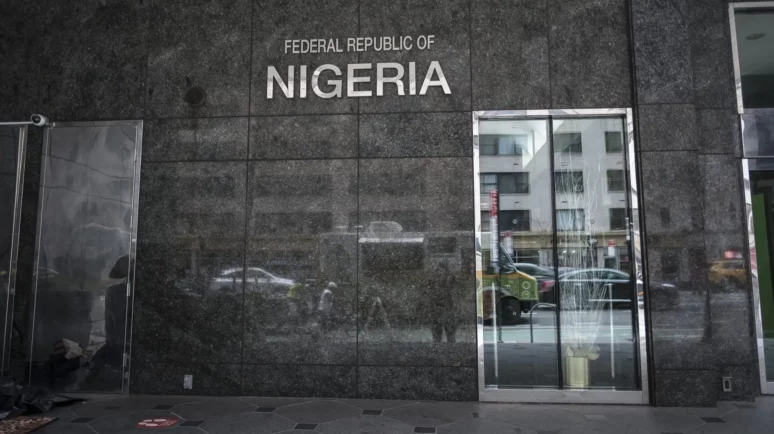Binance Converts $1 Billion of Emergency Fund to USDC Despite Stablecoin Regulations Flux

Binance strengthens user asset security by converting its $1 billion emergency fund (SAFU) to USDC stablecoin. l Source: Ramsey Cardy/Sportsfile for Web Summit via Getty Images
Key Takeaways
- Binance aims to improve the reliability of its emergency fund (SAFU) by converting its holdings to USDC.
- This move highlights a broader trend of strategic changes under Binance’s new CEO, Richard Teng.
- The $1 billion SAFU fund now represents a noteworthy 3% of the total supply of USDC.
- The move may come as a vote of confidence as US stablecoin regulations remain up in the air.
Binance, the world’s largest cryptocurrency exchange, has announced it is converting its emergency fund for users into USDC.
This strategic shift into USDC aims to enhance the reliability and stability of the fund. The decision underscores Binance’s commitment to ensuring the utmost security and protection for its users’ assets, marking a pivotal step in fortifying the exchange‘s risk management framework. However, Binance’s decision came at a time when American lawmakers are examining potential stablecoin regulation.
Binance Converts $1 Billion
Established in 2018 as a safety net for customers during “extreme situations”, the Secure Asset Fund for Users (SAFU) has been a cornerstone of Binance’s risk management strategy. Binance disclosed its decision to transition 100% of SAFU’s assets to USDC. The latter is a stablecoin that maintains price parity with the US dollar.
As a Binance Academy post revealed, Binance previously held funds in wallets comprising TUSD, BNB, Bitcoin, and Tether’s USDT. This move to USDC marks the latest strategic shift under Chief Executive Officer Richard Teng’s leadership over the past five months.
Binance clarified that while the SAFU fund typically hovers around $1 billion, its value has fluctuated in response to market movements in the past.
Binance emphasized the importance of leveraging a trusted, audited, and transparent stablecoin for SAFU, asserting that this decision enhances its reliability and maintains stability at $1 billion. The exchange further stated that it can easily track the fund’s value in real-time using a publicly available blockchain address.
What Is SAFU?
The acronym ‘SAFU’ stands for Secure Asset Fund for Users. It serves as an emergency reserve on the Binance to safeguard investor assets. This fund reimburses investors who suffer asset losses due to hacks or any other adverse events occurring on the exchange that result in the loss of user assets.
On July 3, 2018, Binance introduced the Secure Asset Fund for Users (SAFU) as an emergency insurance mechanism to protect its users during hacks or security breaches. The SAFU fund is sustained by allocating a portion of users’ trading fees, with the total amount increasing as more users engage in trading activities on Binance.
Binance created SAFU shortly after it encountered a significant security breach in 2019, aimed at safeguarding users’ assets. According to then-Binance CEO Changpeng Zhao (CZ): “To safeguard the future interests of all users, Binance will establish a Secure Asset Fund for Users (SAFU). Commencing in July 2018, we will allocate 10% of all trading fees received to SAFU. Protecting our users and their funds in extreme scenarios. This fund will be stored in a separate cold wallet.”
Through this initiative, Binance endeavors to protect every user utilizing their exchange. Even when their security measures may falter. SAFU is funded by directing 10% of all trading fees toward providing insurance coverage for potential breaches. The funds within SAFU are stored in secure cold wallets, accessible only in extreme emergencies.
SAFU’s 3% of USDC Supply
The billion-dollar insurance fund managed by Binance now constitutes approximately 3% of Circle’s stablecoin supply, which is $32.6 billion.
This marks the second transformation of the fund in just over a year. In March 2023, Binance disclosed its decision to substitute the Binance USD (BUSD) holdings within the SAFU with Tether and TrueUSD (TUSD).
A regulatory crackdown on BUSD issuer Paxos prompted this strategic adjustment. The latter had announced the cessation of minting the exchange-backed stablecoin.
Tether continues to maintain its position as the world’s leading stablecoin . Its circulating supply has reached record levels of $108 billion, commanding a market share of 69%. Circle’s USDC follows as the second largest stablecoin. It holds a market share of approximately 20%, with supply expanding by 33% since December 2023.
Stablecoin Regulation In The US
Binance’s shift happened during a significant stride toward enhancing stability and oversight in the rapidly evolving realm of digital finance. US Senators Kirsten Gillibrand and Cynthia Lummis have introduced the Lummis-Gillibrand Payment Stablecoin Act. This legislation, meticulously crafted over several months, aims to establish a comprehensive regulatory framework for payment stablecoins. Also, it addresses concerns surrounding their utilization and inherent risks.
The unveiling of the Lummis-Gillibrand Payment Stablecoin Act signifies a noteworthy bipartisan endeavor to tackle the regulatory complexities associated with stablecoins. With senators from both ends of the political spectrum collaborating, there is a clear acknowledgment of the imperative to strike a harmonious balance between nurturing innovation within the digital finance domain and ensuring robust safeguards are in place to protect consumers and uphold the stability of the US dollar.
At the heart of the proposed legislation is a commitment to fostering responsible innovation while safeguarding consumer interests. By mandating one-to-one reserves for stablecoin issuers and instituting comprehensive state and federal regulatory frameworks, the bill aims to foster a transparent and accountable ecosystem for stablecoin operations.
This initiative will bolster confidence among users and investors alike, while mitigating potential risks associated with unbacked or algorithmic stablecoins.


